Grip Strength for Everyday Function: From Hands to Forearms
What is the role of grip strength in daily activities and overall health?
Lost your password? Please enter your email address. You will receive a link to create a new password.
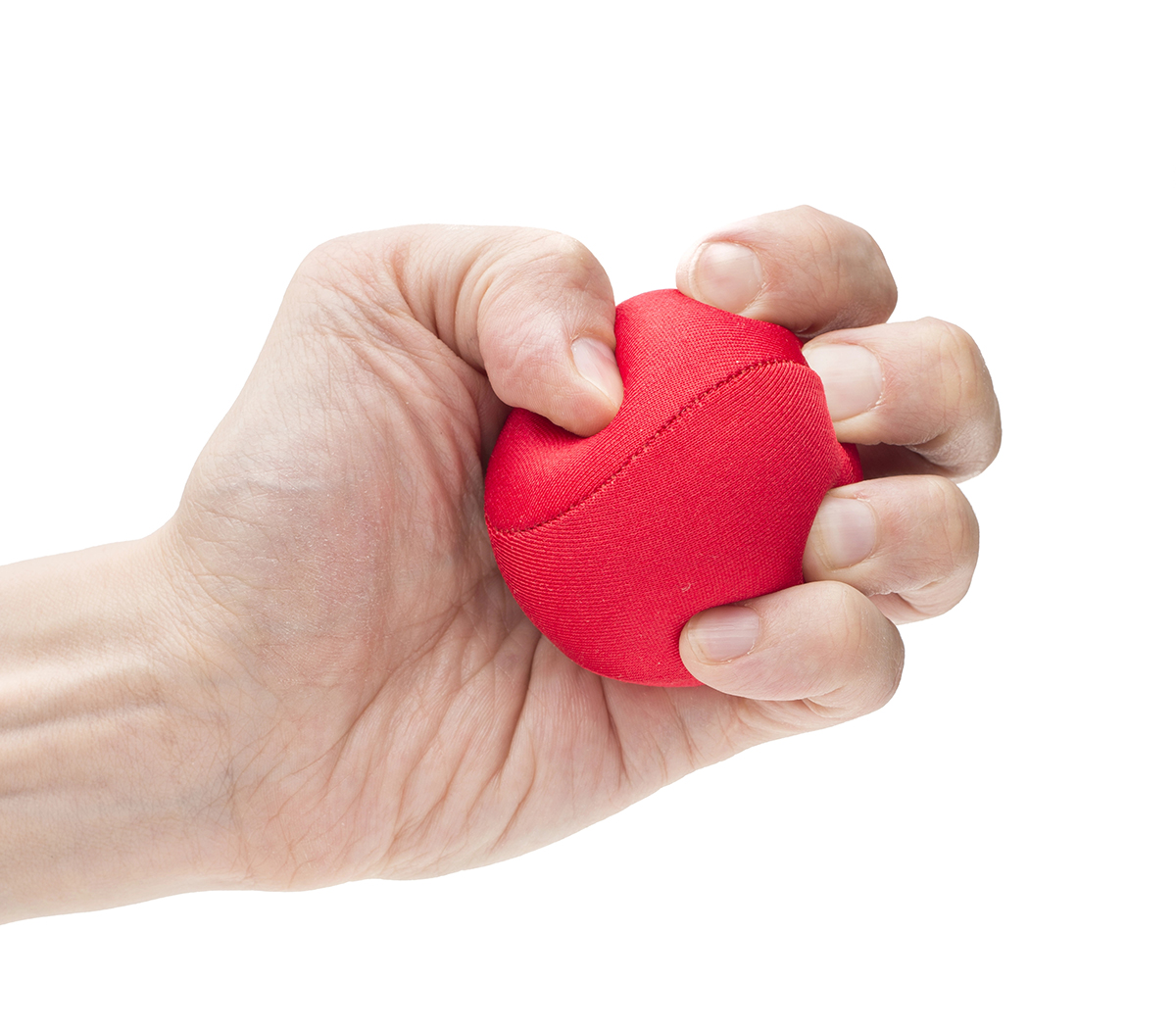
What is the role of grip strength in daily activities and overall health?
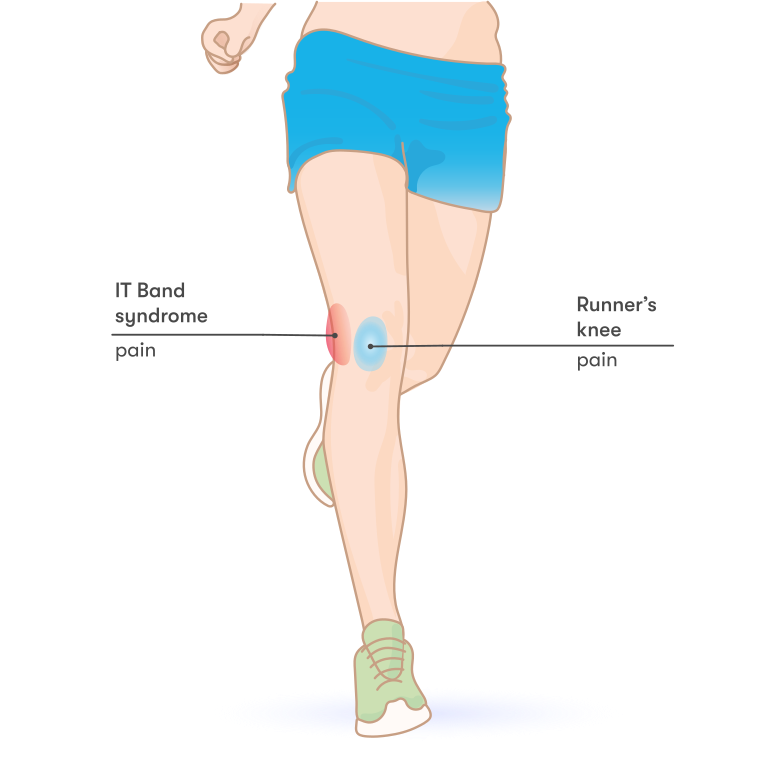
Iliotibial band syndrome (IT) is a pain many workout enthusiasts, runners, and cyclists can experience.
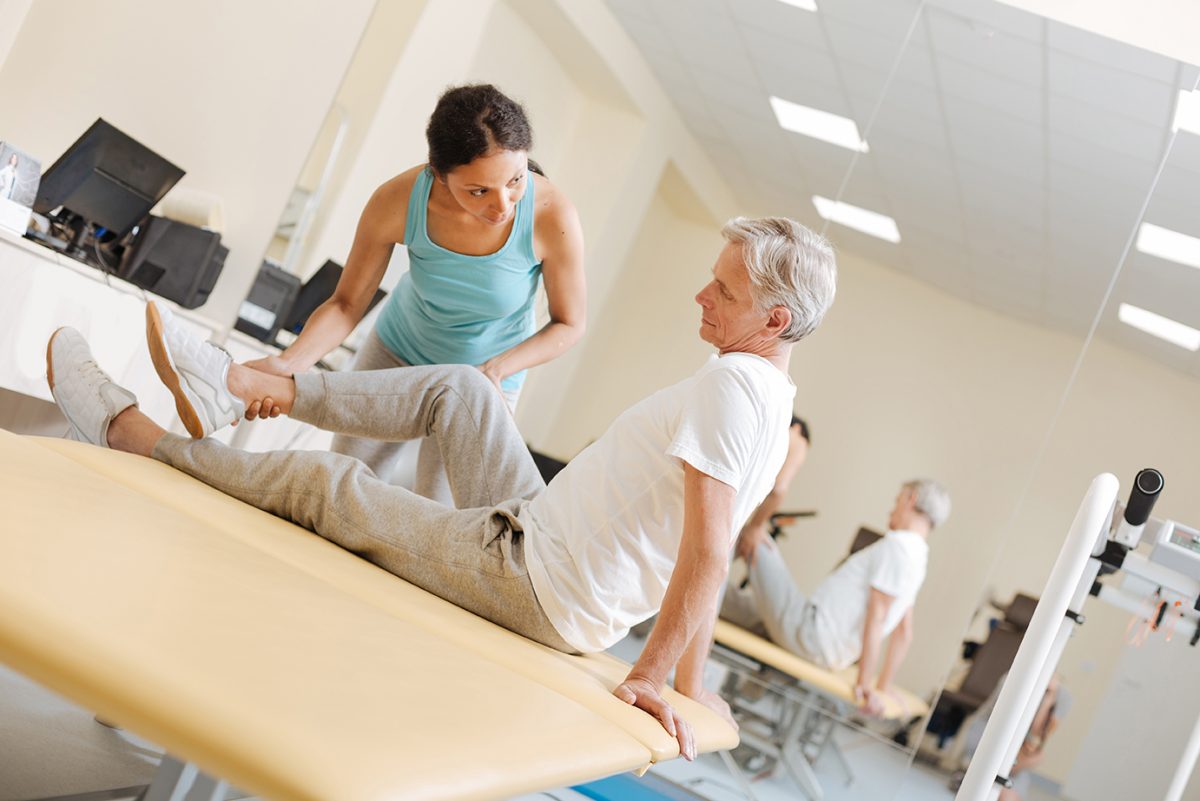
You’ve heard the terms functional exercise, functional movement or functional movement patterns… but what do these terms actually mean?
The term “functional movement patterns” is confusing because it is really not a specific term. Trainers, especially those putting MSers on exercise programs, will usually take them through a program of upper and lower body exercises incorporating compound movements that ask your body to do several things at once. They tell you this is a functional exercise routine and that it’s the best way to help you with your MS limitations. Every exercise is NOT considered a functional one. So what’s the difference?
Functional, by definition, means, “of or having a special activity, purpose, or task; relating to the way in which something works or operates”. In this case, the task is being a functional MSer with the ability to use your body to do what you’d like it to do like you did before your MS diagnosis.
And even though being “functional” is different from one person to the next—for instance, a triathlete needs to be able to run, bike, and swim without limitation or pain, while a homemaker (male or female) needs to be able to do household chores such as lifting groceries out of a car, moving a vacuum cleaner and loading and unloading a dishwasher without limitation or pain—the actual movement patterns required for these activities aren’t really that different.
When you think of functional movement patterns, you should see them as movements that engage your whole body in a variety of different active ways that involve coordinating your upper and lower body with areas that alternate from being steady to moving, and back again.

So where exercises like squats are considered functional because they require full-body coordination, strength, and stability exercises like biceps curls aren’t considered functional because they lack the full-body mental and physical engagement that comes into play with basic motion.
The main difference between functional training and other exercises that work each muscle is that exercises such as biceps curls or leg extensions attempt to isolate that muscle. When doing these movements we’re working individual body parts as separate from the others creating stimulus within those parts. Functional movements put the emphasis on using your whole body at once.
The focus on functional movement patterns, in theory, is to train your body to move effectively as a fully connected single unit so it is able to sit, stand, bend or change direction effectively when you need it to. Some of the functional exercises I use are squats, lunges, and pushups. These movements effectively engage the whole body in the exercise although they emphasize specific muscles as the main force of action.

I believe in functional movement patterns and agree there is a place for them in MS training BUT without the individual muscle-specific training it would be impossible to do a functional movement. If your legs are so weak from MS limitations how are you going to perform a proper squat that uses all the muscles in your legs?! You won’t be able to. This is why specific muscle training is so important. And the only way to get muscle-specific strength is through resistance training. But it doesn’t end there…
You must strength train each major muscle group, individually and specifically to gain the ability to “function”. I know you keep hearing about functional exercise for MS and how important it is. You are told that you MUST be in a program using functional movement patterns to help your MS limitations. I HAVE MS and I have been a fitness expert for more than 40 years. The real FACT is that functional movement patterns are secondary to strength training. They are important but more important to your physical abilities are training methods that incorporate resistance exercises with principles that cause “thought-based training” ™ which create muscle fiber activation, neuroplasticity, and brain to muscle reconnection.
Please be careful with who and what you take in as being the right fitness information for MS, especially coming from fitness “experts” who do not understand MS. There is much more to proper exercise for MS than jumping into the next repetitive functional program. And any trainer who says he/she is teaching you how to place mental attention on your workouts but only tells you to concentrate on what you are doing does not understand the significance of proper focus. It is not just a simple matter of paying attention to your exercises and form. It is the training methods you use that force that focus and concentration that is of key importance in your MS exercise program. Exercise programs pushing functional pattern movements with no focus driven process or training method behind them other than the standard and cookie-cutter, “do 10 reps of 3 sets”, are of little value in bringing results to our MS bodies.
Learn what you need to help MSers… check out the Multiple Sclerosis Fitness Specialist online course for fitness and health professionals!
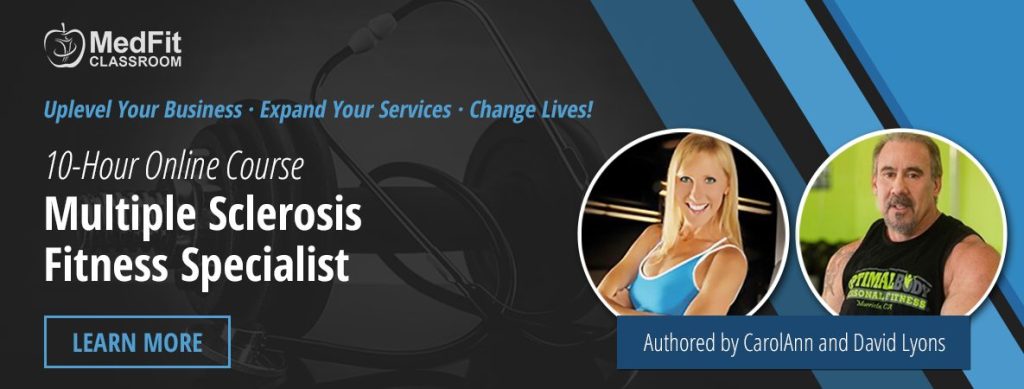
David Lyons, BS, CPT, is the founder of OptimalBody, which touches the lives of fitness enthusiasts of all kinds. OptimalBody has been named The Most Comprehensive MS Fitness Program worldwide since its release. His book, Everyday Health & Fitness with Multiple Sclerosis, was a #1 New Release on Amazon at its release. He is the 2013 recipient of the Health Advocate of the Year Award; in 2015, he received the first ever Health Advocate Lifetime Achievement Award, and the Lifetime Fitness Inspiration Award in Feb 2016. In 2017, David received the Special Recognition Award from the National Fitness Hall of Fame.
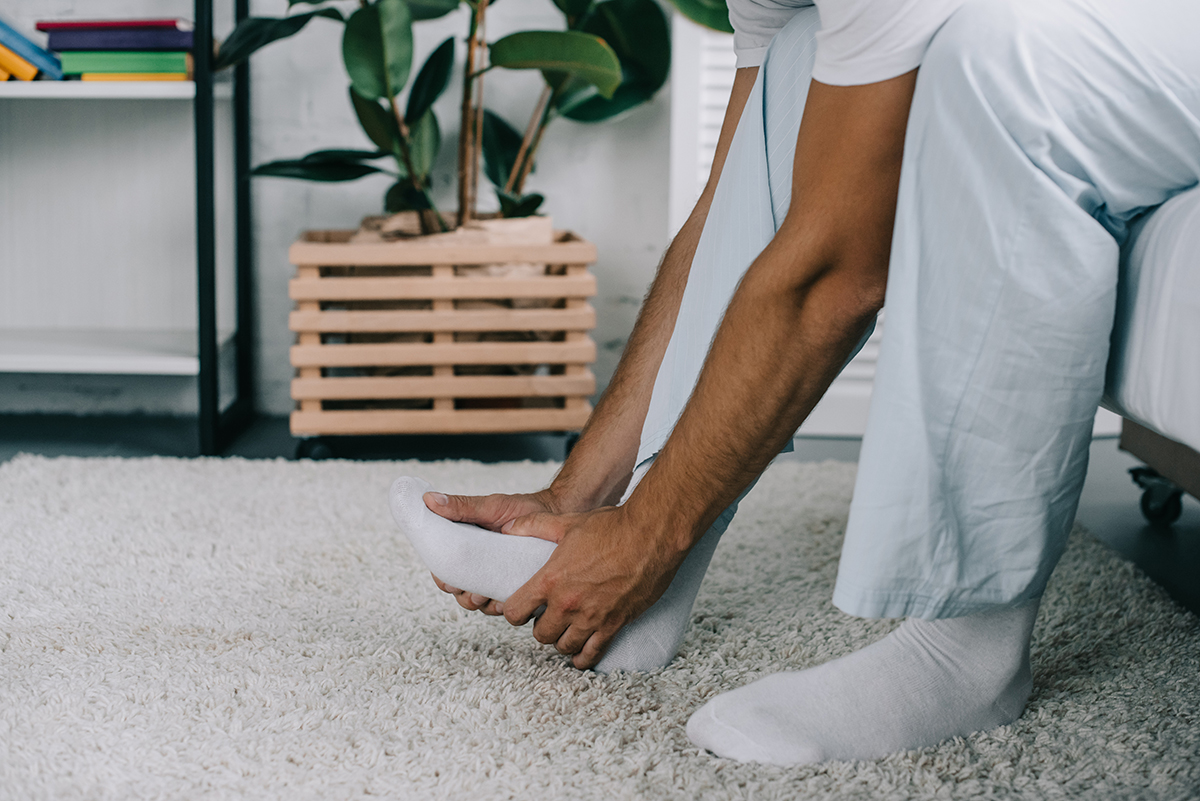
Overly stretched, tiny tears can lead to inflammation and pain in the arch of the foot. This condition, called plantar fasciitis, accounts for nearly one million doctor visits per year. Our foot has a thick band of tissue called fascia that runs from our heel to our toe. This troublesome foot issue is actually more common in women than men. We need to spend time on our feet moving, so this foot problem, if left untreated, can cause excessive pain and greatly limit our mobility.
Plantar fasciitis is more common as we age (specifically between ages 40 and 60), but is also more likely to occur in someone who is overweight or constantly on their feet. It is very common in runners. Activities that are known for high rates of plantar fasciitis include ballet, dance, long-distance running, and ballistic jumping. There are a few other contributing factors which include wearing shoes that are worn out and have thin soles or wearing high-heels. The mechanics of how you walk (your stride) involves your foot position. If you have flat feet or a tight Achilles, the body will compensate for these dysfunctions which can lead to injury of the fascia.

Pain starts to occur near the heel towards the bottom of the foot. Most people feel the pain in the morning right when they get out of bed. This is known as “first-step pain”. This can also occur if you have been sitting for a long period of time and then stand up. The plantar fascia acts like an absorbing shock spring in our foot. Repetitive stretching and tearing of this area results in a stabbing pain.
If pain persists, seeing a doctor can help detect this condition. He or she will check the tender areas of the foot. The good news is that plantar fasciitis does normally go away on its own. There are several treatment options. A doctor might prescribe anti-inflammatory medication or a steroid injection. Physical therapy and massage can help as well as shock wave therapy to stimulate blood flow. A Tenex procedure can remove scar tissue in the area or surgery can be done to remove the plantar fascia off of the heel bone. Wearing the right shoes or using shoe inserts oftentimes does the trick, so be sure to try these simple fixes first. Ice and soaking the heel can also help alleviate pain .
A good home remedy is freezing a foam cup of water then rubbing the top of the cup on the heel for 10 or so minutes. Stretching the calves and Achilles tendon can help over time and there are ways to tape the area of the foot to position the heel correctly with each step. Night splints worn to hold the foot at a 90 degree angle help when stretching the fascia.
There’s no doubt that we use and abuse our feet, bearing vast amounts of weight on them while performing all of our daily functions. As we walk from point A to point B, getting those 10,000 steps in, we must practice self-care from head to toe to heel. Sometimes foregoing that cute pair of shoes even at the gym is worth the fashion sacrifice to walk without pain.
Megan Johnson McCullough, owner of Every BODY’s Fit in Oceanside CA, is a NASM Master Trainer, AFAA group exercise instructor, and specializes in Fitness Nutrition, Weight Management, Senior Fitness, Corrective Exercise, and Drug and Alcohol Recovery. She’s also a Wellness Coach, holds an M.A. Physical Education & Health, and is a current doctoral candidate in Health and Human Performance. She is a professional natural bodybuilder, fitness model, and published author.
References
https://journals.lww.com/jaapa/Fulltext/2018/01000/Plantar_fasciitis__A_review_of_treatments.4.aspx
https://journals.sagepub.com/doi/full/10.1177/2473011419896763
https://academic.oup.com/occmed/article/65/2/97/1488760
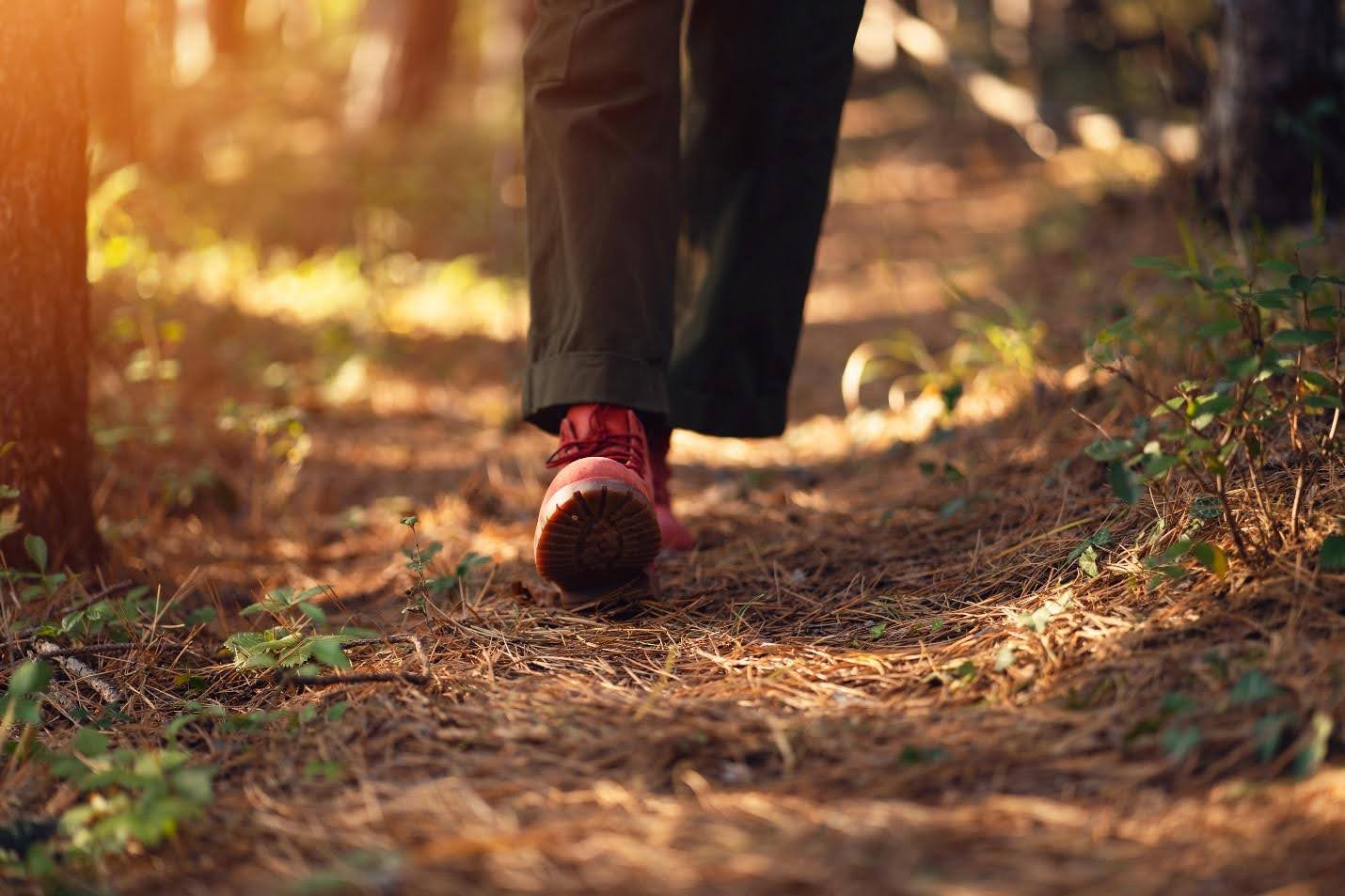
Short answer: Absolutely.
Focused attention has the power to improve your health, mood and cognition. When it comes to moving steadier, research shows that practicing mindfulness while walking can improve balance in older adults. This is a simple practice that anyone can do to move more freely and live more fully with more confidence.
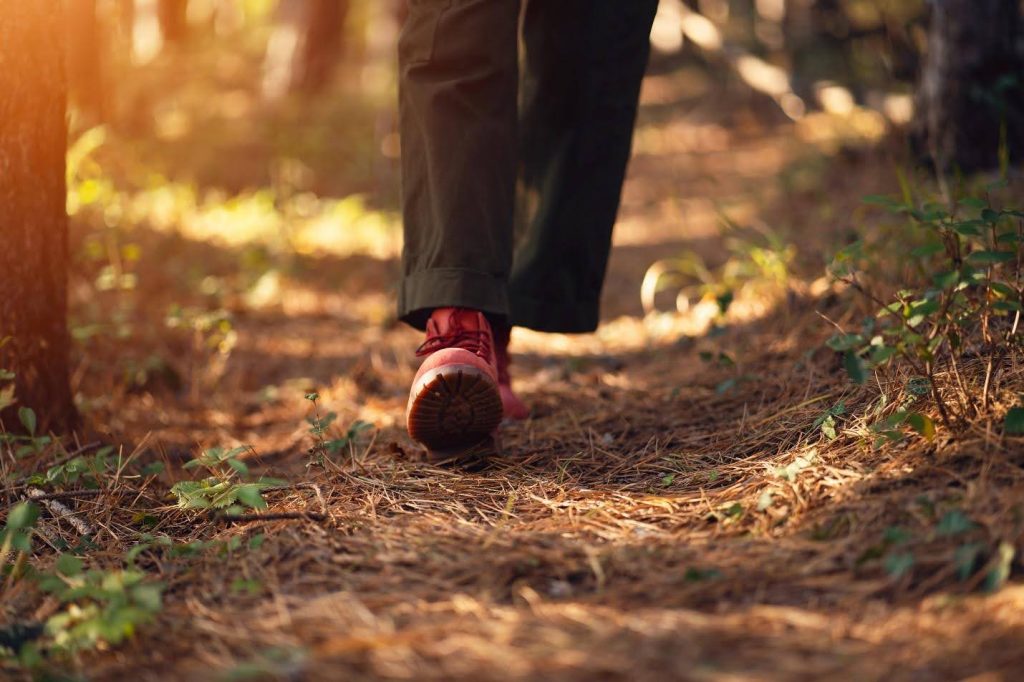
Being mindful means to simply focus on the present moment. Its roots stem from ancient eastern and Buddhist philosophy. It includes being aware of your thoughts, feelings, sensations and the surrounding environment through a gentle, nurturing lens. This way you can tune into what you are sensing in the present moment rather than living in and rehashing the past or projecting into the future.
Do a PubMed search on “mindfulness and health” and 14,955 studies pop up in the National Library of Medicine! These research studies show there are numerous well-being benefits that can help people of any age with any health condition including:
One foundational way that mindfulness and meditation improve health is by calming your nervous system. Moving out of the sympathetic stress response and into the parasympathetic relaxation response is where health happens. It’s where the body can rest, digest, heal and repair itself.
Constantly living in “stress mode” where you always feel overwhelmed, fearful or tense puts your body into a chronic state of inflammation that damages cells, tissues and organs. This damage accumulates and can lead to impaired bodily systems from your nervous system, respiratory, cardiovascular, musculoskeletal, and immune system. This can result in inflammaging where the body is under constant stress and strain and breaks down more than it can repair itself. It is a major reason for the age-related decline in physical and cognitive function that makes it more difficult to move and think smoothly and easily.
It’s well-accepted that practicing Tai Chi improves ankle proprioception and balance. Now studies are showing that walking meditation can do the same for elderly women and older adults with history of falling (1, 2). Walking meditation has even been shown to improve ankle proprioception and balance performance in people with chronic ankle instability! (3)
Walking meditation is a mindfulness practice where you walk slowly while focusing your attention on your leg and foot movements (2). Researchers saw improved ankle proprioception and balance improvements with older adults being able to stand on one leg for a longer time as well as increased neuromuscular control. When focusing your attention on your movement, researchers think that this improves the brain processes related to body awareness and balance adjustments (1).
Stronger neural and muscular connections mean you can be faster to sense and respond to your everyday environment, as well as recover from the loss of balance to effectively prevent a life changing injury or fall.
For the happiest, healthiest and safest holiday season, before engaging in activity, focus on “BEAM” to relieve stress, boost mood, build a sharper brain, taller posture and better balance. BEAM is an acronym that stands for Breathe, Elongate, Align and Move Mindfully.
You can imagine being as long, strong and sturdy as a “beam.” Another meaning of “beam” is to be happy, smiling and radiating a line of bright light or energy. Visualizations can enhance physical and emotional well-being and help bring your attention into the present moment.
Breathe: take 3-4 deep breaths into the front, back and sides of your belly, up into your ribs and then chest; exhale in the opposite direction from your chest, ribs and then squeeze your belly button towards your spine.
Elongate: lengthen your spine on each inhalation lifting from the crown of your head
Align your body: feel light with body parts lined up; ears over shoulders, shoulders over hips, hips over knees and ankles. Practice standing with feet hip distance apart, toes pointing forward and knees softly bending over your second and third toes; pelvis is in neutral, your sternum lifts up and out with ribs aligned over pelvis, shoulders are back and down away from the ears, line up ears over shoulders that are over hips, knees and ankles.
Move Mindfully: think about where you are and what you are about to do; whether you are cooking, cleaning, going up or down stairs or walking inside or outside focus on your leg and foot movements
Practice BEAMing throughout your day so you can move mindfully and enjoy feeling sharper, steadier, lighter and more confident with each step you take throughout the holiday season.
Millions of people over age 65 looking for guidance from fitness professionals who are knowledgeable in exercise, nutrition and lifestyle principles that can help them improve functional mobility, while also preventing and managing chronic conditions to live their highest quality of life. The Geriatric Fitness and Lifestyle Specialist online certificate course will give you insights, strategies and tools to be a successful professional in this rapidly growing market. Learn how to be a valued part of clients’ continuum of care, working with the medical team to improve functional outcomes and positively impact people’s lives.
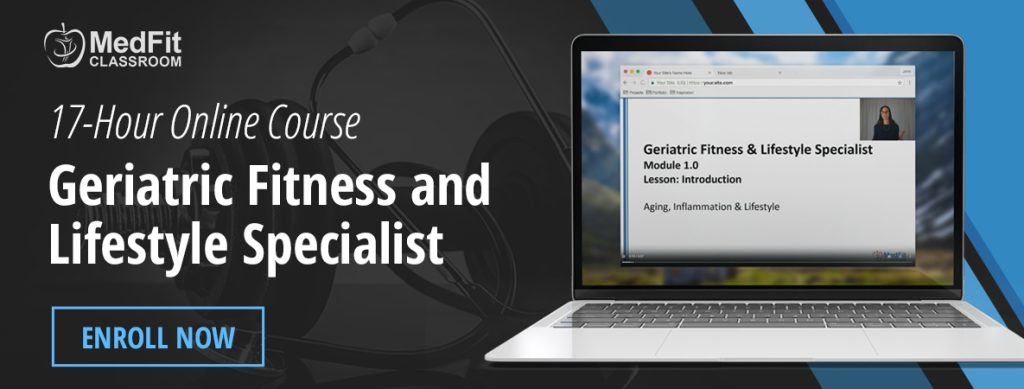
Cate Reade, MS, RD is a Registered Dietitian and Exercise Physiologist on a mission to improve functional mobility and health span utilizing the power of lifestyle medicine. She has been teaching, writing and prescribing healthy eating and exercise programs for over 25 years. Today, as CEO of Resistance Dynamics and inventor of the MoveMor™ Mobility Trainer, she develops exercise products and programs that target joint flexibility, strength and balance deficits to help older adults fall less and live more.
References
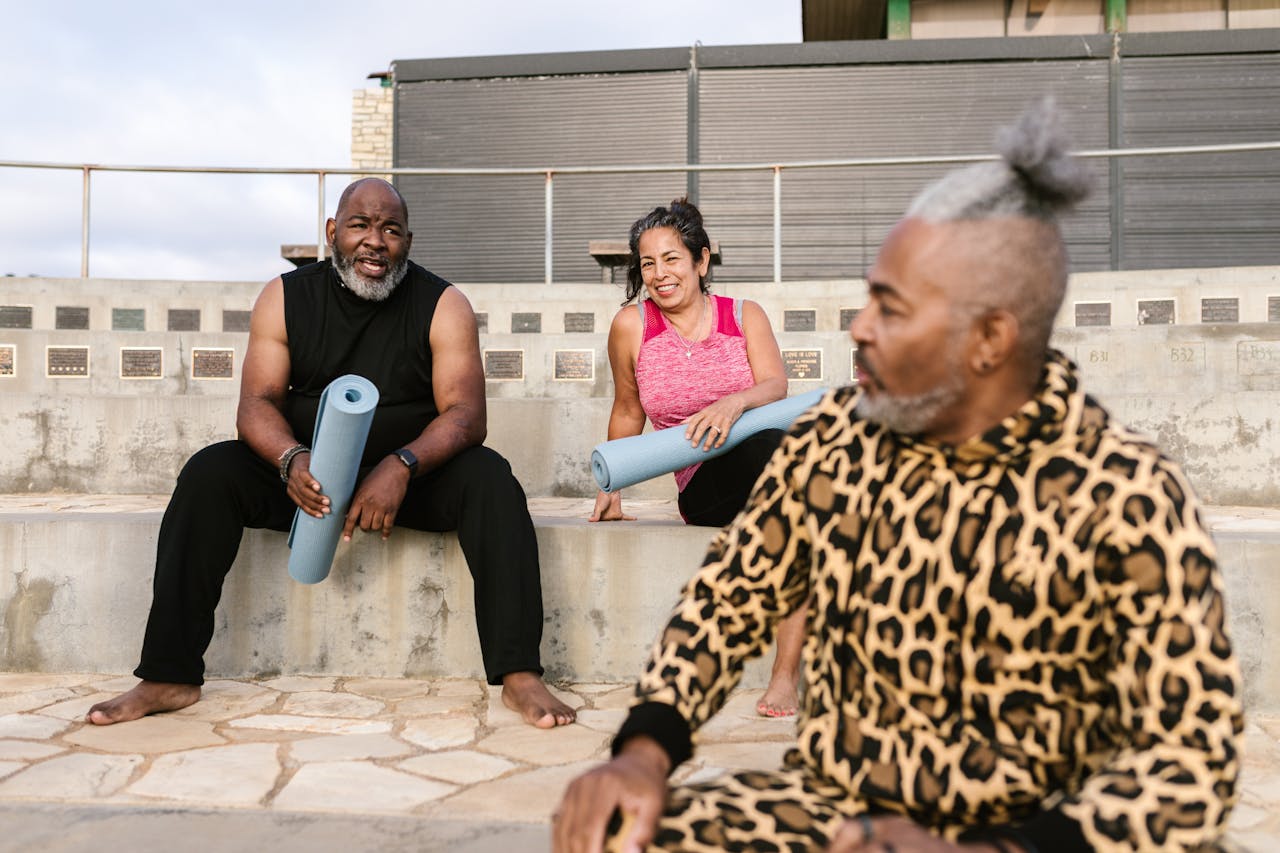
Are you one of the 50% of people in the United States that suffers from chronic pain due to an illness or injury? Or are you the 1 in 4 adults with at least one form of arthritis or experience inflammation due to an autoimmune disease? Maybe you are a part of the 45% of people who have been diagnosed with type 2 Diabetes or the 12% that have at least 5 chronic illnesses?
According to the Center for Disease Control, an increasing proportion of Americans are dealing with multiple chronic illnesses and are living in chronic pain. However, the good news is that our medical and fitness industry has been making some headway when it comes to promoting and educating the public on the power of exercise to prevent and reduce the onset of chronic diseases. With the growing number of specializations and medical fitness certifications, the number of fitness professionals that are highly trained to work with this demographic is quickly growing due to the help of the most recent research that promotes exercise as way to prevent various diseases.
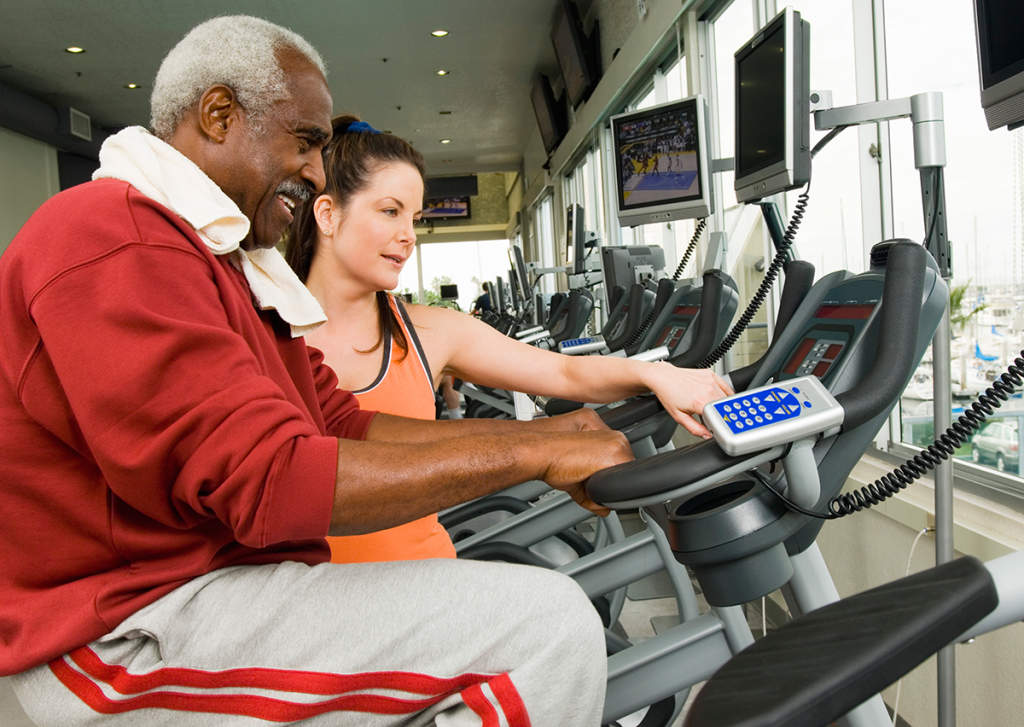
Do you have a doctor who understands the power of exercise? If so, that is a great start! Regular exercise such as: repetitive and exaggerated movements will activate and build muscle, which is valuable in restoring function, prolonging effects of diseases, and improving neural pathways, muscle memory & Neuroplasticity!
Exercise has been proven to help reduce pain, decrease the dependency on medication, and prevent diseases such as:
The benefits are seemingly endless, however, what about the people in the United States who lack the knowledge, time, money, or opportunity to implement and execute a fitness and wellness routine? What if YOU are a part of the active aging African American community who faces significant disadvantages when it comes to health and fitness due to a combination of systemic, socioeconomic, and cultural factors?
Historically, African Americans have had limited access to quality healthcare and fitness resources, which has led to a higher prevalence of chronic diseases such as hypertension, diabetes, and obesity. Additionally, socioeconomic barriers such as lower income and education levels often result in reduced access to healthy foods, safe exercise environments, and preventive healthcare services. These disparities are compounded by cultural factors, including mistrust of the healthcare system due to historical injustices and a lack of representation in health and fitness professionals, which can discourage engagement in health-promoting behaviors.
Some statistics are quite startling:
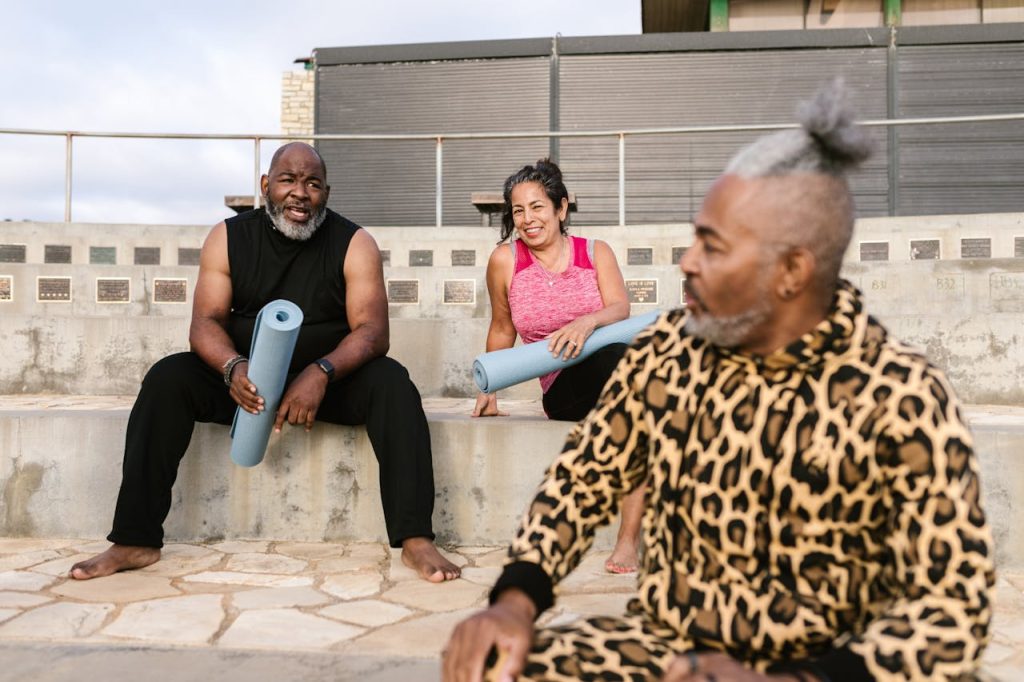
Health and fitness coaches can play a crucial role in addressing these disparities by implementing culturally sensitive and accessible programs. Firstly, coaches can provide education on the importance of regular exercise and balanced nutrition, tailored to the specific needs and preferences of African American Active Agers. This can include offering workshops in community centers, churches, and other familiar settings, making it easier for individuals to participate. Secondly, coaches should advocate for and facilitate access to affordable fitness options, such as sliding scale gym memberships or community exercise programs. Ensuring that these programs are welcoming and inclusive can help reduce the intimidation or alienation that many African Americans may feel in traditional fitness environments.
Additionally, health and fitness coaches can foster partnerships with local healthcare providers to create a holistic approach to wellness that addresses both physical and medical needs. They can also serve as advocates for policy changes that improve access to health and fitness resources in underserved communities. By building trust and providing consistent support, coaches can empower African American Active Agers to take charge of their health and improve their overall quality of life. This multi-faceted approach not only addresses immediate fitness needs but also contributes to long-term health improvements and reduced disparities.
Nicole Gordon is a seasoned women’s fitness and health coach with over a decade of experience, specializes in empowering busy women to achieve holistic wellness. As a certified personal trainer, group exercise instructor, and integrative nutrition health coach, Nicole advocates for balanced relationships, meaningful movement, creativity, and spiritual well-being. Her coaching philosophy, centered on “staying in your lane” while striving for progress, helps clients attain improved mobility, flexibility, strength, and energy for a balanced life.
Christine M. Conti, BA, M.Ed, is an international fitness educator and presenter. She currently sits on the MedFit Education Advisory Board and has been nominated to be the 2020 MedFit Network Professional of the Year. She is currently writing the MedFit Network Arthritis Fitness Specialist Course and is the CEO and founder of ContiFit.com and Let’s FACE It Together™ Facial Fitness & Rehabilitation. Christine is also the co-host of Two Fit Crazies & A Microphone Podcast and the co-owner of TFC Podcast Production Co.
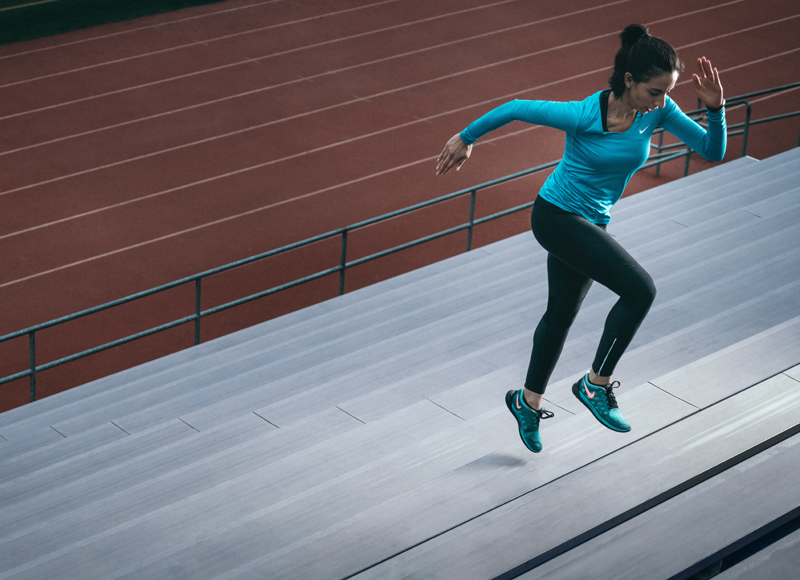
The real power of being fit is in the ability of the cardiovascular system to perform at high levels throughout the day. The process of becoming fit is inherently tied to the heart’s ability to pump blood and oxygen to the organs, tissues, muscles, and extremities during periods of peak demand. The conditioning process is a daily effort requiring activity and movement. The training process is the planned activity that is designed to stress the system intentionally over time and at a prescribed intensity. They are two sides of the same coin and will be highlighted in this article.
The benefits of cardiovascular development and training are: Increased cardiac output (stroke volume), decreased blood pressure, reduced blood sugar levels and increased insulin sensitivity, increased aerobic capacity, increased energy levels, improved sleep patterns, improved emotional balance, decreased risk of developing heart disease, and of course – improved ability to control body weight. These and other benefits are derived from the purposeful movement and increased adaptability of the human body. We were meant to move, even run, and over the millennia have learned NOT to run – or even move – and this has led to the rise of chronic and debilitating diseases such as diabetes and heart disease on a massive scale.
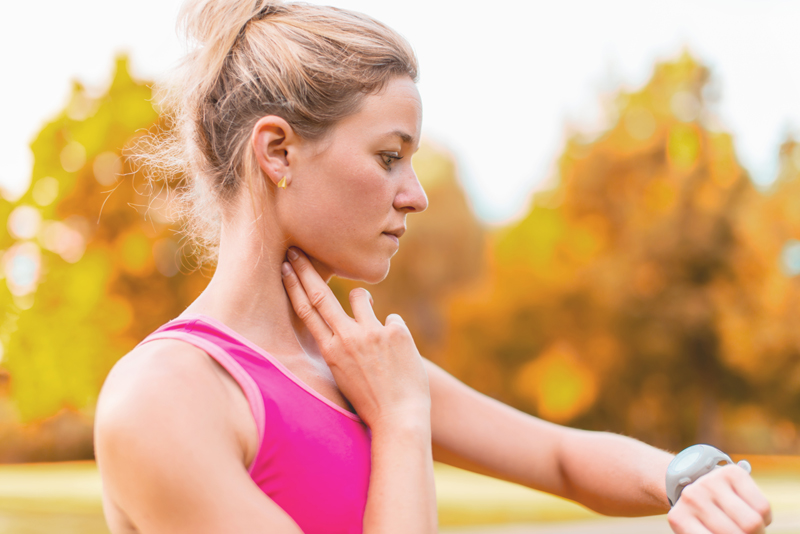
The standard formula that has been used to determine your training heart rate has been a simple one: 220-your age = your maximum heart rate. Take the result and multiply by 55-85% and get the range for most people’s training heart rates. It is flawed and subject to a 10-20% margin of error. Example: 220-66 (my age) = 154x.85=131 or my maximum training heart rate. If by chance I am de-conditioned and have not exercised in quite a while I would choose a lower percentage – 70% or 108 beats per minute for my training heart rate.
The training number (or intensity) is subject to the individual’s level of fitness, medical profile, and their ability to perform the exercise as designed at the prescribed rate. If you feel that your weight is an issue then you start at a lower intensity (65-75% for example) for a shorter period of time, increasing the number of minutes gradually over time. This is the conditioning aspect of cardio conditioning and training. It is the first phase of the cardio conditioning process and can last up to 6 months to a year (or more), depending upon the individual’s ability and how often you schedule sessions during the week.
I have been a runner since 1964 so for the past 48 years I have been training my cardiovascular system at higher intensity levels in order to maintain its capacity to deliver blood and oxygen to my body’s tissues and organs – for a very long time. This is the point of the training activity over time. Training is determined by the body’s ability to adapt to varying levels of intensity over time. The more flexible and adaptable the program becomes the more flexible and adaptable the cardio system becomes. This long term approach enables and empowers us to reach for higher levels of achievement and accomplishment over time. Cardio conditioning and training are the long term partners in the fitness formula for success. Effort and discipline MUST be demonstrated over time for results to take hold and again, recording the training sessions is KEY to remaining dedicated, motivated, and directed toward your goals.
The final point I want to make about cardio training is that there are an unlimited number of activities that qualify as cardio conditioning and training methods. They are as diverse as the number of people engaging in these activities. Walking, swimming, cycling, hiking, skiing, rollerblading, skating, playing or participating in endurance sports and many others you can define for yourself can open the door to a happy and healthy fitness lifestyle. Running has always been my passion and over the past 48 years I have run approximately 70,000 miles. It is my hope that I will reach 100,000 miles before I leave this planet. Whatever you choose to do over the course of your life for cardio health and fitness make sure you choose something you LOVE to do. This is the secret to a long and healthy life. What is the best exercise? Answer: The one that you WILL DO! It is that simple. So get moving and breathe today!
Exercise to me is life itself. In our world today we are encouraged to sit – and sit some more. It is toxic to life and our lives in particular. Cardio activities are “breathing” activities. They require us to move our WHOLE bodies – not just individual parts. The feelings of joy and happiness that are generated by “intentionally” moving our bodies on a daily basis are lasting. They can carry us through many of life’s ups and downs – and help us emerge whole and healthy on the other side of sadness or defeat. I can remember many years where I was struggling emotionally, financially, and spiritually and running “saved” me so that I could try again tomorrow. My tomorrows came because I spent some of my days in activity that I loved – and that made all the difference. I believe in exercise as the KEY to our future health and well being. Let’s decide today to get moving and have many “happy tomorrows”!
Nicholas Prukop is an ACE Certified Personal Trainer & a Health Coach, a fitness professional with over 25 years of experience whose passion for health and fitness comes from his boyhood in Hawaii where he grew up a swimmer on Maui. He found his calling in writing his first book “Healthy Aging & You: Your Journey to Becoming Happy, Healthy & Fit” and since then he has dedicated himself to empowering, inspiring and enabling people of all ages to reach for the best that is within them and become who they are meant to be – happy, healthy and fit – and be a part of a world where each person can contribute their own unique gifts to life.
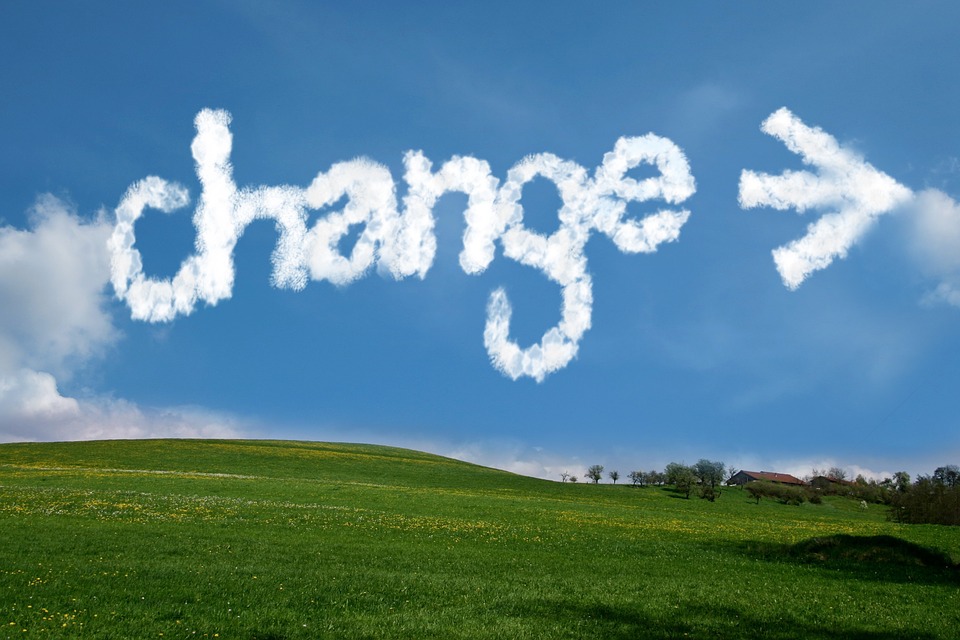
Humans are neurobiologically wired to seek out safety, convenience, and familiarity in our day to day choices. The repetition of these choices create our behavioral patterns.
Behaviors serve two purposes; first, to get something. Second, to avoid something.
Our behaviors cannot change until we become consciously aware of what environment and/or triggers are creating them.
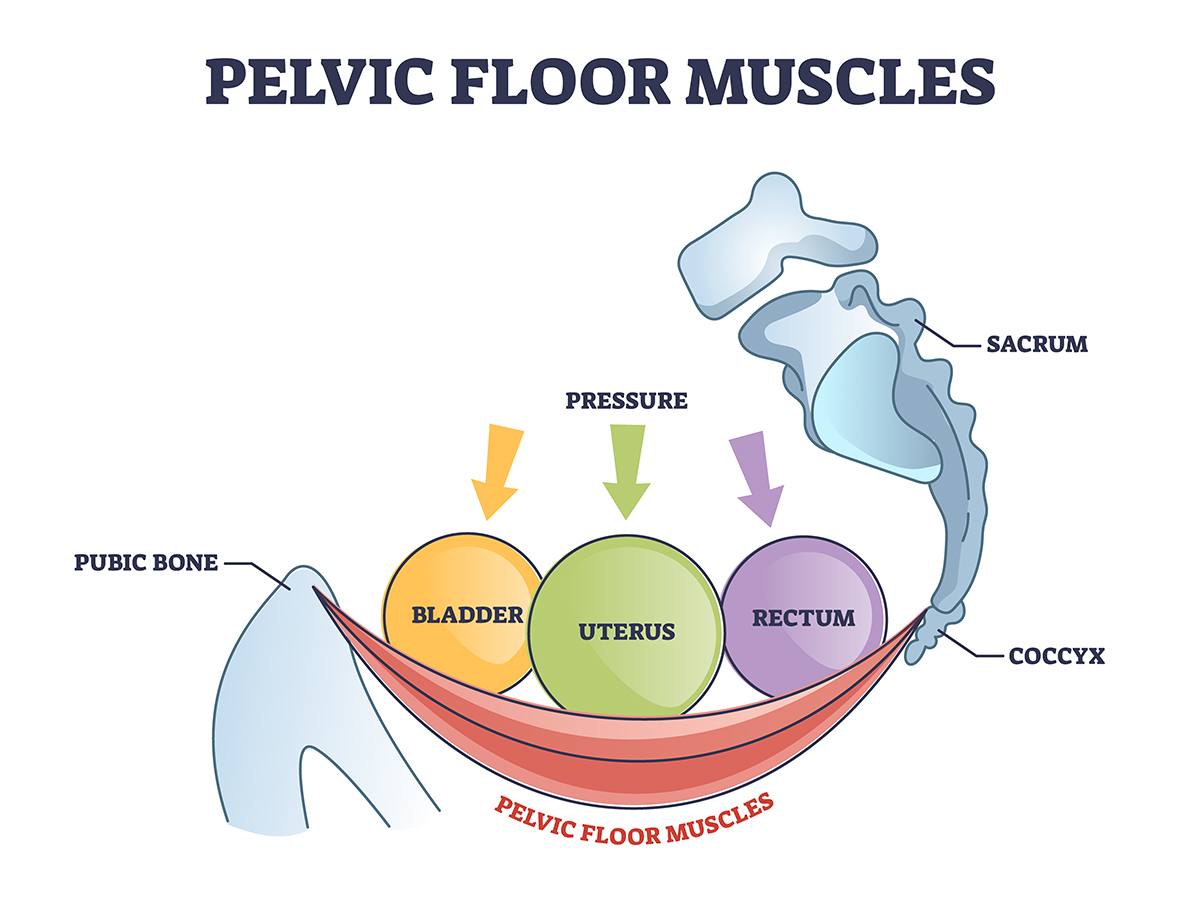
The area of the body referred to as your pelvic floor are the muscles that are used to urinate, pass bowel movements, and for sexual intercourse. When or if these muscles weaken, there can be uncomfortable and inconvenient interferences for someone’s day to day living. The side effects of having a weak pelvic floor are negative, so taking preventative measures can be important and incorporating exercises to strengthen these muscles is necessary. We need to be in control of squeezing and relaxing these muscles, although most of the time this is done automatically.
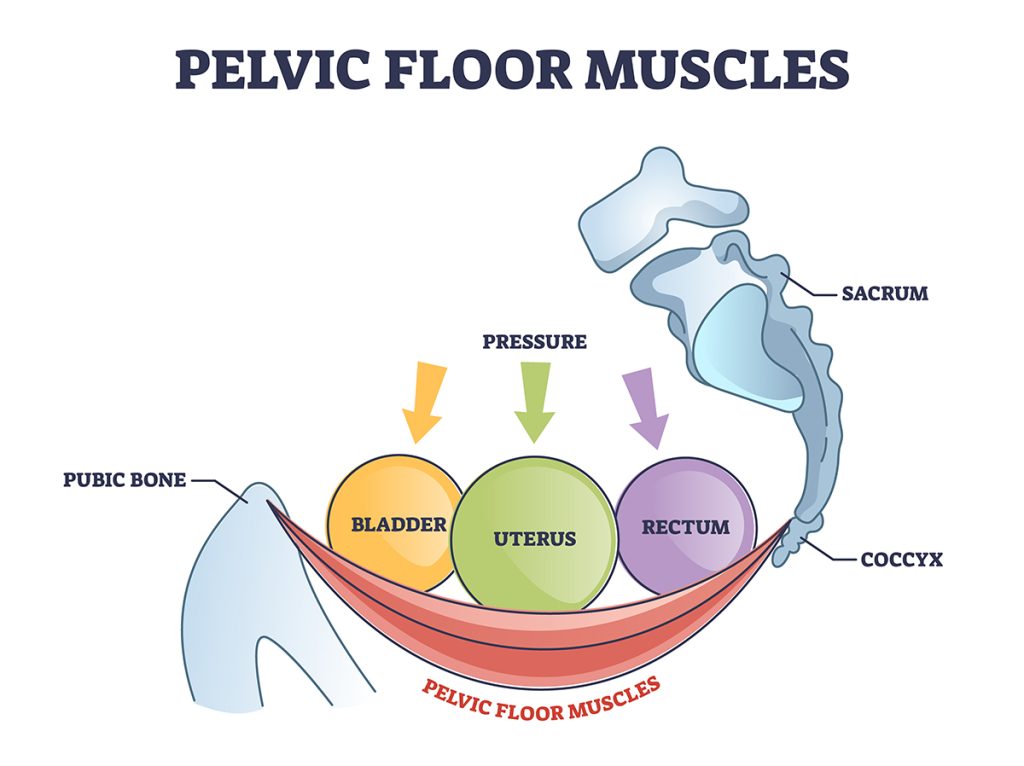
Your pelvic floor muscles are your core. These include your abdominal muscles, back muscles, and your diaphragm. They wrap around the pelvic bone to tailbone and then extend on both sides of the pelvis. If you want to feel where these muscles are you can squeeze the urethra to stop yourself from peeing or squeeze your anus to stop yourself from passing gas. There are two main muscles of the pelvic floor which are the levator ani (which has three parts) that wraps around the entire pelvic and the coccygeus which is located near the back of the pelvis.
There are a few reasons the pelvic floor can weaken over time. Childbirth, trauma, and surgery are the most common culprits. These muscles are stressed during pregnancy. Hormonal changes in women as they age, particularly during menopause, can weaken the muscles. Persons with diabetes are also at higher risk for weaker pelvic floor muscles. Certain conditions can also weaken them. These would include stress incontinence, urge incontinence, anal incontinence, fecal incontinence, and what is called pelvic organ prolapse. Stress incontinence happens to many women post childbirth and for men post prostate surgery. This is when you might dribble pee when you sneeze, cough, laugh, and/or lift something. Urge incontinence is the constant feeling of needing to pee. Anal incontinence is having a hard time controlling when you pass gas, and fecal incontinence is having a hard time controlling bowel movements. Pelvic organ prolapse is when the muscles including the uterus, bladder, and rectum might bulge into the vagina and cause a protrusion.
Treatment depends on the severity of the condition. There are natural approaches to do this, but surgery could be required. Kegel exercises would be the first measure. Kegels are an effective exercise which involves squeezing and relaxing the pelvic floor muscles, focusing on controlling the sensation. Squeezing time can start with 3 seconds and increase to 8 to 12 seconds over time. Exercises shouldn’t be done if there has been trauma or injury to the area unless cleared by a medical professional. There are trained physical therapists to guide and assist with pelvic floor exercises as well. Avoiding constipation if possible is also helpful. This could include lifestyle changes revolving around diet, activity, and medications.
Most people don’t even think about their pelvic floor muscles until a problem arises. Natural aging brings about new areas of the body we become aware of and took for granted at younger ages. As with all areas of our health, being proactive rather than reactive is desired. It’s important to address health issues even if the topic is embarrassing or private. Helping ourselves helps others and there are natural measures we can take without extreme invasive procedures.
Originally printed on Every BODY’s Fit blog. Reprinted with permission.
Dr. Megan Johnson McCullough, owner of Every BODY’s Fit in Oceanside CA, is a NASM Master Trainer, AFAA group exercise instructor, and specializes in Fitness Nutrition, Weight Management, Senior Fitness, Corrective Exercise, and Drug and Alcohol Recovery. She’s also a Wellness Coach, holds an M.A. Physical Education & Health and a Ph.D in Health and Human Performance. She is a professional natural bodybuilder, fitness model, and published author.
References:
Pelvic floor muscle exercise and training for coping with urinary incontinence – PMC (nih.gov)